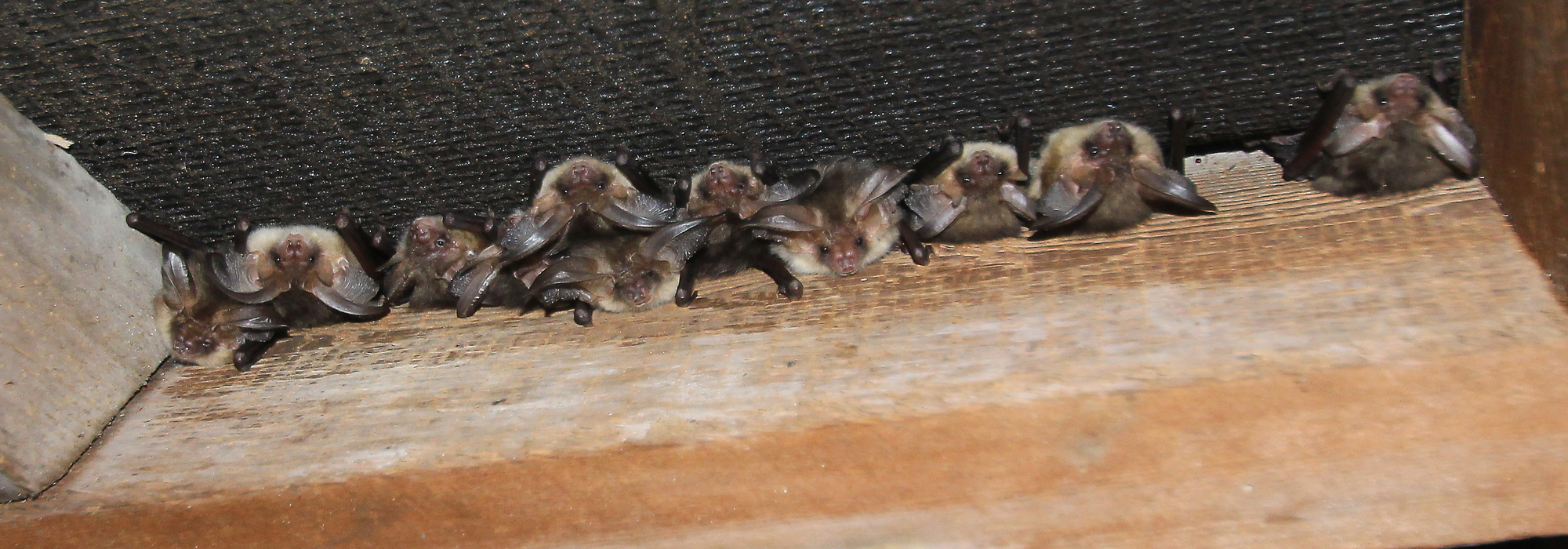Bat Surveys
There are 17 species of bat resident in the UK (18 if you count the greater mouse-eared bat) all of which are protected under the Conservation of Habitats and Species Regulations 2010. Several species are also UK Biodiversity Action Plan species. Common & soprano pipistrelles, Daubenton’s and brown long-eared bats are most common in Sussex.
This makes them an important consideration for many planning applications.
Bats will use a variety of habitats both to forage and to roost. As a result there are a number of different survey techniques which are used to determine whether bats are roosting or active on a proposed development site.
The first thing that must be determined (usually during a phase 1 or ‘walkover’ survey) is whether there are buildings or trees suitable for roosting bats on the site. It is also important to take note of any foraging features such as woodlands or ponds on or close to the site, and features such as hedgerows and tree lines which may be used for commuting between roosting and feeding areas. An initial assessment can be carried out at any time of year.
Assessing roost potential
A tree assessment will focus on features such as the presence of rot holes, cracks, crevices and aerial dead wood, as well as looking for signs of presence such as staining around an entry point or droppings below. It is also possible for a bat licenced tree climber to assess the roost status of the tree.
A building assessment will look at exterior features including; hanging tiles, cracks within the brickwork, gaps behind soffits, fascias and window frames, all of which can be used by individual crevice roosting bats. It is important to consider features which allow entry by bats into the building such as lifted roof tiles and ventilation grilles. If possible the interior of the building should be inspected. This will look for signs of roosting bats such as droppings, feeding remains as well as considering the suitability of loft spaces, cavity walls and other features to support bats.
If it is concluded that the site is suitable for bats then further survey is likely to be necessary. The type of survey is dependent on the proposals for the site…
Dusk (emergence) and dawn (return-to-roost) surveys
These are usually used if a building or tree is to be demolished, altered or felled. The surveys involve observing exterior features to see whether bats emerge, or by following bats back to the roost at dawn. Dusk surveys begin around half an hour prior to sunset and will continue for two hours afterwards; dawn surveys will begin an hour and half prior to sunrise and finish at dawn.
Activity surveys
These are carried out when a development will affect the wider habitat used by bats, and are particularly useful for assessing the potential impacts of wind turbine proposals. Activity surveys usually involve walked transects through the site in order to identify where bats are foraging or roosting, and if there are any particular commuting features which are heavily used by bats. The findings can then influence the layout of development to avoid impacts to bats.
Both activity surveys and dusk/dawn surveys should be carried out when bats are active (between the end of April and September). Surveyors should be equipped with bat detectors and a recording device which will allow echolocation calls to be analysed and bats identified to species level. Activity surveys can be supported by static bat detectors to help establish an activity ‘index’.
Hibernation surveys
If during the initial assessment a building or tree is identified as being suitable for hibernating bats then an inspection during the hibernation season may be necessary (carried out by a licenced bat ecologist). Alternatively, environmental monitoring equipment can be installed to assess whether suitable conditions exist during the winter months to support hibernating bats (such as consistent temperatures and reasonable humidity).
If bats are found on a site a Natural England European Protected Species licence will need to be obtained prior to carrying out any activities which may affect bats or their roosts.
Bat surveys can be complicated due to their high level of protection, differing requirements of the UK species and their close association with man-made structures. As a result it is important to consider them early in project-planning to avoid later delays – in many cases it can be relatively simple to resolve potential issues through minor amendments to development plans.
Now is an excellent time to get started with any bat surveys you might need to undertake in order to get your development plans approved. If your site features any of the habitats described above, get in touch for some advice on how best to take them into account.
Contact us if you’d like to find out more.
For information on other kinds of protected species surveys, click here…
(25/4/13)
Urban Edge Environmental Consulting Ltd
Unit 5 | Westergate Business Centre
Westergate Road | Brighton | BN2 4QN
©2019 Urban Edge Environmental Consulting Ltd. All rights reserved.

